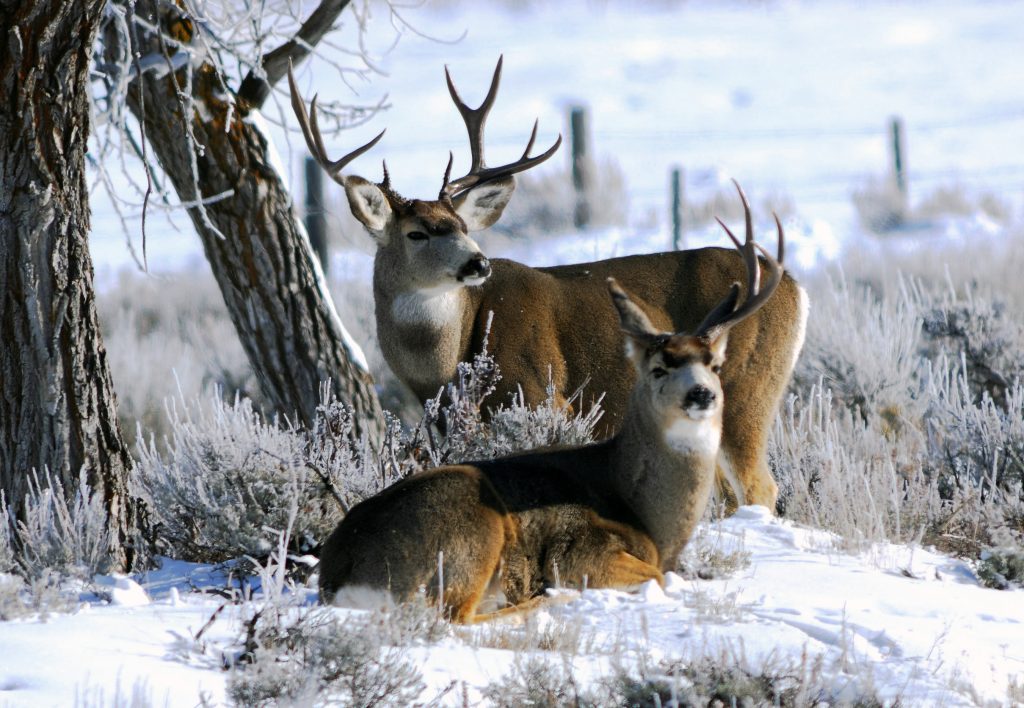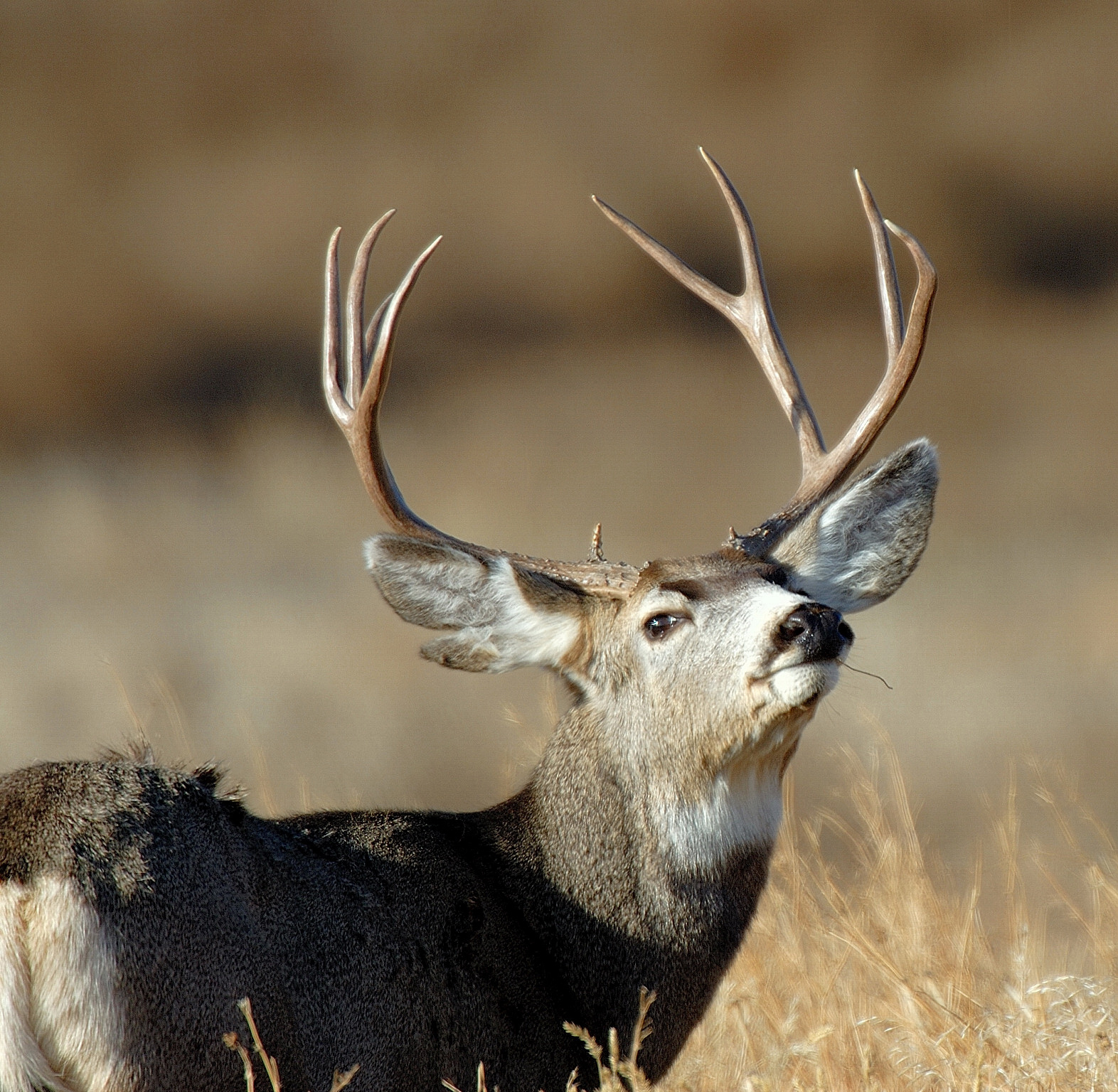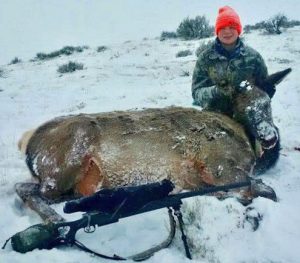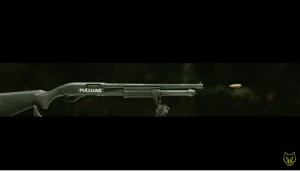Drought conditions, followed by a tough winter in parts of the state, might lead to a slight reduction in the number of general season buck deer hunting permits available in Utah this fall.
Permits for other species, including desert bighorn sheep, bison and pronghorn, might increase.
Permit recommendations
The following are the total number of permits biologists with the Division of Wildlife Resources are recommending for Utah’s 2017 big game hunts:
| Hunt | 2016 | 2017 |
|---|---|---|
| General buck deer | 90,675 | 89,050 |
| Premium limited-entry deer | 184 | 184 |
| Management buck deer | 55 | 61 |
| Limited-entry deer | 1,166 | 1,191 |
| Doe deer | 755 | 1,470 |
| General any bull elk | 15,000 | 15,000 |
| Youth any bull elk | 500 | 500 |
| General spike bull elk | 15,000 | 15,000 |
| Limited-entry bull elk | 2,752 | 2,833 |
| Cow elk, public draw | 13,680 | 9,980 |
| Cow elk, private lands only | 12,010 | 8,790 |
| Buck pronghorn | 771 | 849 |
| Doe pronghorn | 630 | 750 |
| Bull moose | 68 | 68 |
| Cow moose | 20 | 22 |
| Bison | 96 | 148 |
| Bison (archery bison) | 0 | 10 |
| Desert bighorn sheep | 42 | 53 |
| Rocky Mountain bighorn sheep | 35 | 32 |
| Mountain goat | 102 | 106 |
| Mountain goat (archery only) | 0 | 2 |
General buck deer permits
During the 2016 general buck deer hunt, 90,675 hunters took 31,800 buck deer. That’s the highest success rate in Utah since 1996, when nearly 104,000 hunters took almost 33,000 bucks.
Even though hunters harvested plenty of bucks last fall, that’s not the main reason the number of bucks per 100 does has declined slightly in some areas in the state. Justin Shannon, big game coordinator for the DWR, says a difficult winter two years ago, followed by drought conditions in 2016 and then a severe winter this past winter, have reduced the number of younger bucks in some areas.

“Before this winter started,” he says, “we found a statewide average of 59 fawns per 100 does. In some parts of Utah, the winter of 2016–2017 was pretty severe, and we know some fawns died. The hunting units that were hardest hit by the winter are the units on which we’re recommending a permit decrease. There will probably be fewer 1 1/2-year-old bucks on those units this fall.”
After the hunts were over last fall, the statewide buck-to-doe ratio, on general season units in the state, averaged 21 bucks per 100 does. That’s slightly higher than the 18 to 20 bucks per 100 does objective most of the general season units are managed for. “There should still be plenty of bucks to hunt in Utah this fall,” Shannon says.
Doe deer permits
While buck deer permit numbers might go down a bit—from 90,675 in 2016 to 89,050 in 2017—the number of doe deer permits might go up.
Letting more public hunters take does is the reason why. If public hunters don’t take the does, many of them will likely be taken by private landowners.
Shannon says all of the recommended doe deer permit increases are for units in Southern Utah. “We’re recommending the increases to address situations where deer are getting into farmers’ fields and eating their crops,” he says. “Instead of private landowners taking the deer, we’d like to give public hunters a chance to take them, before the does reach the farmers’ fields.”
Permit increases
While the number of buck deer has decreased slightly in Utah, other big game populations are growing. Desert bighorn sheep, bison and pronghorn are three examples. Here’s a recap of the number of permits biologists are recommending for the three species:
| Hunt | 2016 | 2017 |
|---|---|---|
| Desert bighorn sheep | 42 | 53 |
| Bison | 96 | 148 |
| Bison (archery only) | 0 | 10 |
| Buck pronghorn | 771 | 849 |
| Doe pronghorn | 630 | 750 |




